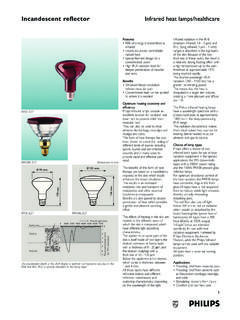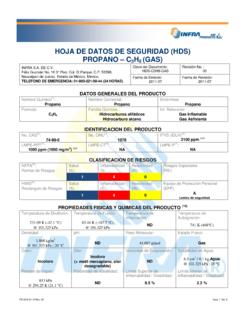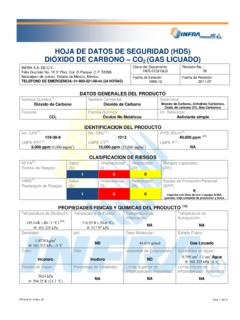Transcription of Infrastructure and Sustainable Development - …
1 Korea-World Bank High Level Conference on Post-Crisis Growth and Development June 3, 2010 June 4, 2010 Busan, Korea Draft for comments only Infrastructure and Sustainable Development Presenters: Marianne Fay and Michael Toman Paper presented at the Korea-World Bank High Level Conference on Post-Crisis Growth and Development , co- organized by the Presidential Committee for the G -20 Summit and the World Bank with the support of the Korea Institute for International Economic Policy (KIEP). The findings, interpretations, and conclusions expressed in this paper are entirely those of the authors. They do not necessarily represent the views of the World Bank Group or those of the Executive Directors of the World Bank or the governments they represent.
2 Not for Circulation or Referencing i Infrastructure and Sustainable Development Marianne Fay, Mike Toman, Daniel Benitez and Stefan Csordas World Bank, Washington DC Paper prepared for Korea-World Bank Conference on Post-Crisis Economic Development , Busan, June 4 2010 The authors thank Antonio Estache for his contribution to Infrastructure research which is drawn upon extensively in this paper, as well as a number of others who offered advice and comments. Responsibility for the content of the paper is the authors alone. Not for Circulation or Referencing ii Contents Infrastructure Matters .. 3 Infrastructure and Growth.
3 3 Leaps and bounds - network effects .. 4 Apples and oranges - heterogeneity in the quality of Infrastructure investments .. 4 Which came first - endogeneity of Infrastructure investments .. 5 Infrastructure and Poverty Reduction .. 6 Infrastructure and Environmental Sustainability .. 7 Infrastructure Achievements to Date Are Far From Sufficient .. 9 Factors Explaining Slow Progress in Infrastructure Provision .. 11 Infrastructure is costly .. 12 Infrastructure investments are not always efficient .. 13 What does not get measured does not get done .. 14 The Private Sector can only do so much .. 14 PPI has grown steadily even in low- income countries.
4 14 PPI brings efficiency improvements but also can be costly .. 18 Summing Up: How Large Might Future Infrastructure Expenditures Be? How Might the Needed Increases Be Accomplished? .. 19 Infrastructure Investment and Other Actions for Green Growth .. 21 Policies for Addressing Environmental Externalities .. 21 Setting Environmental Standards .. 22 Green Technology Innovation Green Investment Cost and Green Growth .. 23 Summing Up: What is the Case for Green Investment to Induce Green Growth? .. 25 The Way Forward: Proposals for Further G20 Attention .. 25 Annex 1. A Heroic Attempt at Guess-timating Future Infrastructure Financing Needs and financing gap.
5 28 References .. 30 Not for Circulation or Referencing 1 Executive Summary Despite some progress, most developing countries still suffer from insufficient Infrastructure access, quality and reliability. While more Infrastructure need not mean more growth, since other constraints also may be binding, poor Infrastructure performance is affecting competitiveness, slowing achievements in health and education and disproportionately harming the poor. There are several causes of the generally disappointing Infrastructure investments. Infrastructure is expensive in Africa some 15% of GDP would be needed to achieve even relatively modest improvements.
6 Infrastructure spending is often inefficient suffering from many of the shortcomings associated with public management. The private sector has contributed a lot through PPPs, helping increase both efficiency and access, but it cannot be an alternative to public involvement and financing. In addition, data are limited to monitor what is being spent, how effectively, or what condition Infrastructure is in the sector is characterized by a remarkable paucity of data. This in turn reduces the impetus to improve upon the status quo. Environmental concerns only complicate this picture.
7 Addressing them can increase the cost and complexity of Infrastructure investment, even though the additional societal benefits can well offset these costs. Improved energy efficiency in Infrastructure design also can return higher longer-term benefits from lower costs. Striking the appropriate balance between environmental benefits and costs in planning Infrastructure investments depends on a number of complementary policy issues. These include establishment of sound environmental performance standards, and removal of environmentally damaging subsidies that affect Infrastructure demands (especially in energy and water).
8 The challenge is greater still when weighing Infrastructure options in the context of concerns for mitigating longer-tem threats of climate change. Many of the needed reforms and efforts need to be done domestically. Attracting PPPs also requires a good investment climate framework. To encourage such efforts, there are a number of measures that could be promoted through the G-20. These include: Promoting collaborative efforts to collect and share data on Infrastructure investments and its impacts. An excellent opportunity is presented by the fact that a detailed methodology has been developed and field-tested in the context of the Africa Infrastructure Country Diagnostics that was launched after the G8 Gleneagles summit of 2005.
9 In addition, the IMF s Government Financial Statistics are being revised and could be modified to include information relevant to Infrastructure concerns. Developing an action plan for increasing public and private financing of Infrastructure , as well as improving its efficiency. Developing an action plan for providing increased technical and financial assistance to developing countries in their efforts to improve Infrastructure efficiency, enhance investment climate and integrate environmental with economic concerns. A platform for enhanced collaboration among developing countries could be part of this effort.
10 Not for Circulation or Referencing 2 Introduction Infrastructure is essential for increasing economic progress and reducing poverty. The choices made in the type and scale of Infrastructure investment also have major implications for environmental sustainability. To date, however, limited progress has been made in expanding Infrastructure access in the vast majority of developing countries, with the notable exception of the East-Asian NICs and other countries in the region such as China and Viet-Nam. Moreover, Infrastructure expansion often has come at the expense of the local environment, as well as complicating responses to the longer-term challenge of climate change.















